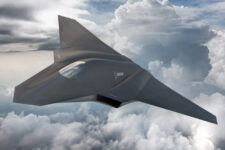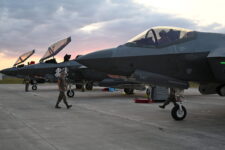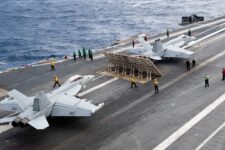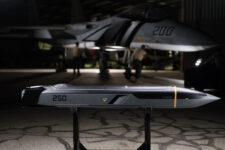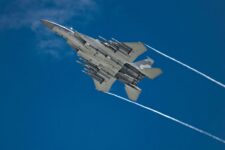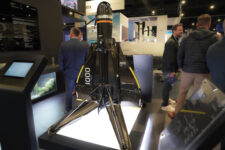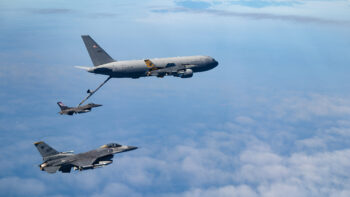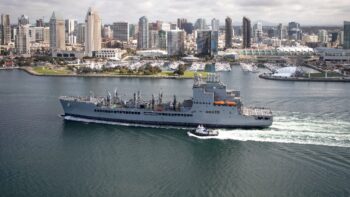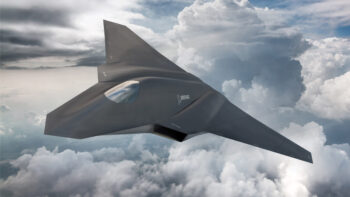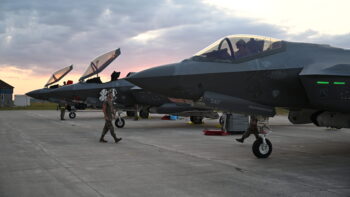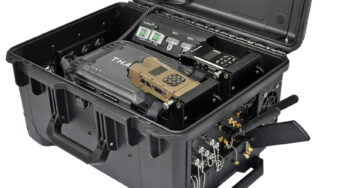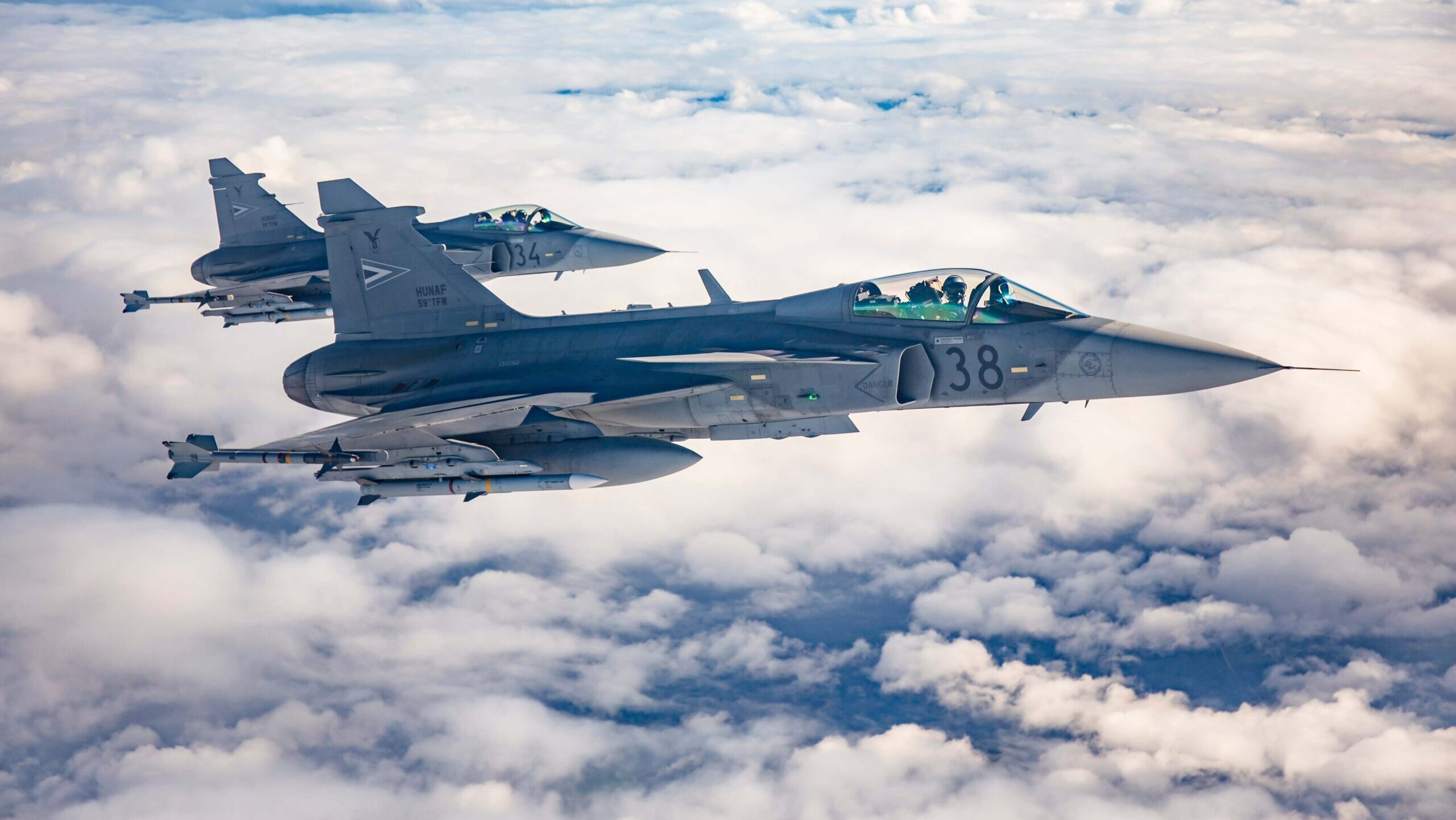
Hungarian Air Force Gripen fighter jets from Puma Squadron take to the skies (Saab)
BELFAST — Hungary has ordered four Saab JAS 39 Gripen C/D multirole fighter jets in an undisclosed deal, to sit alongside an existing fleet of 14 aircraft, the manufacturer announced today.
The agreement was announced as Swedish Prime Minister Ulf Kristersson is in Budapest to meet with Hungarian Prime Minister Viktor Orbán, in what Sweden hopes will be the final push needed for Hungary’s government to approve Stockholm’s NATO membership bid.
It appears to have been successful: according to The Guardian, Orbán indicated to press today that the Gripen deal has helped rebuild “confidence” between the two sides and indicated Hungary’s parliament could ratify NATO membership as soon as Monday.
The deal for additional aircraft was struck following an amendment to an original contract between the Swedish Defence Materiel Administration (FMV) and Budapest, first signed in 2001.
“With this new contract amendment, Hungary will operate a total of 18 Gripen C/D aircraft to protect and defend the Hungarian and NATO airspace,” said Saab.
The company noted it already holds a support contract with FMV for Hungarian Air Force Gripen jets and is “ready to provide upgrades” for the aircraft to keep them flying beyond 2035.
In parallel, Saab and Hungary also signed a Memorandum of Understanding covering “development of high-tech industrial areas and fighter aircraft capabilities.”
Hungary was the third country, behind Sweden and Czech Republic to operate the Gripen C/D planes, initially acquired under a lease agreement for 12 single seaters (Gripen C) and a pair of two seaters (Gripen D). The jets belong to the Hungarian Air Force’s Puma squadron, based out of Keskemét Air Force Base, and are responsible for protecting national, Slovenian air space and taking part in NATO Baltic Air Policing missions.
Gripen C/D jets can be armed with long and short range air-to-air missiles, heavy air-to-ground missiles and guided bombs, according to Saab company literature. The aircraft have also been exported to South Africa and Thailand.
Saab received a SEK500 million ($48 million) contract in 2022 to upgrade the Swedish Air Force’s Gripen C/D fleet so it can remain in service until 2035. The manufacturer is also producing 60 of the more advanced Gripen E/F jets for Stockholm.
The manufacturer had also hoped to receive a Gripen E/F order from the Czech Republic to replace 14 leased Gripen C/D aircraft, but lost out to Lockheed Martin after Prague opted to sign a deal estimated at $5.6 billion for 24 F-35A conventional takeoff and landing fighter jets.
One potential customer for the Gripen also remains Ukraine, but that situation is more complicated than a simple weapons export agreement.
Pål Jonson, Sweden’s defense minister, outlined the government’s position in October 2023, saying that based on “domestic security reasons” NATO membership must happen before any Gripen transfers to Kyiv can potentially take place. Alongside Turkey, Hungary has long delayed a parliamentary vote to ratify Sweden’s entry to the alliance.
A 2022 report from Britain’s Royal United Services Institute defense think tank said that the jet was “by far the most suitable candidate” of Western-manufactured combat jets capable of meeting Ukrainian operational needs in its fight against Russia.
State clears potential $4.1B KC-46 refuelers sale to Japan, $7.2B F-35 stealth fighters sale to Romania
Japan would be permitted to buy up to nine additional KC-46A tankers, while Romania would be cleared to acquire 32 F-35As.

